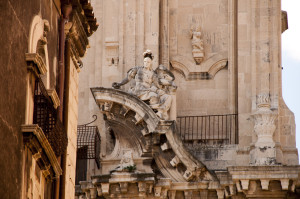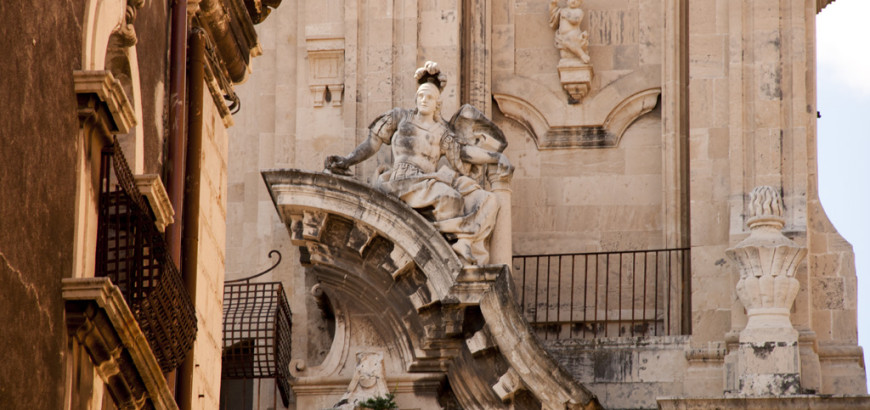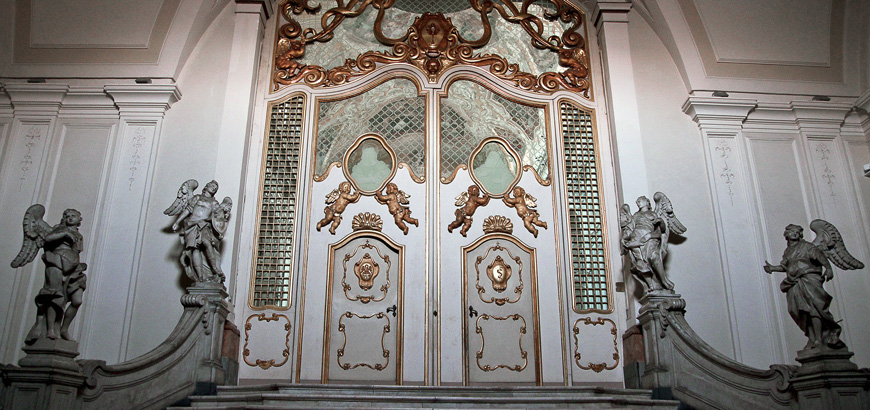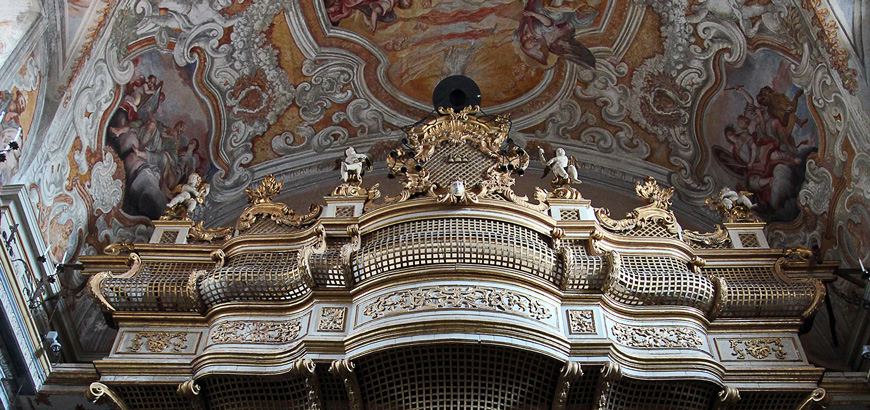
St. Benedict’s Church
3495023822
Tuesday, Friday and Saturday from 10.00 AM to 01.30 PM and from 02.30 PM to 06.00 PM
Audioguides in English and Italian through QRcode or direct link at the ticket office
Full ticket € 6,00
Reduced € 4,00: students, minors between 14 and 18 years
Reduced € 3,00: minors between 6 and 13 years
The visitor has to exhibit the useful documentation to show the affiliation to the band of contribution
It’s located at the beginning of via Crociferi, the Saint Benedict’s Church is an example of late baroque architecture in Catania. It wasn’t immuned to the earthquake in 1693 and it was rebuilt immediately after the disaster with the S. Benedict’s arch, from which it takes its name, that was erected in 1704.
The facade was designed by Alonzo Di Benedetto and enriched by the Vaccarini’s portal; an elegant entrance vestibule features the entry and the staircase leads to the only internal nave. The main wooden door, dating from the eighteenth century, depicts scenes from the St. Benedict’s life.
Inside there are to see the inlaid polychrome marble floor (it is part of the original building and it was painstakingly restored after the earthquake) and the majestic eighteenth-century paintings, principally made by Giovanni Tuccari from Messina.
We suggest you to see “The coronation of the Virgin” painted in the apse and the scenes of “Life of St. Benedict” painted on the ceiling “barrel”, all made by Giovanni Tuccari. With the return of baroque architectural elements of the church in paintings, it is not possible to see a clear separation between the walls and the ceiling, and it give the feeling of an upward thrust of the whole structure.
Other important works of art are kept inside, including the “Immaculate” by Sebastiano Lo Monaco and the “St. Benedict” by Michele Rapisardi, on the altar. Saved from the fury of the earthquake, the altar of the Holy Crucifix and the painting of the Martyrdom of Saint Agatha, dating to 1726 by unknown author.
St. Benedict’s church is part of the cultural itinerary of the Historic Site of St. Benedict Monastery, which includes:
- a Roman domus found in the basement of the cloister of the Monastery;
- some of the local monastery, especially the eighteenth century parlor, setting of the novel by Verga “Storia di una capinera” and of the film by Franco Zeffirelli;
- St. Benedict’s church and its Staircase, for the first time publicly accessible.



